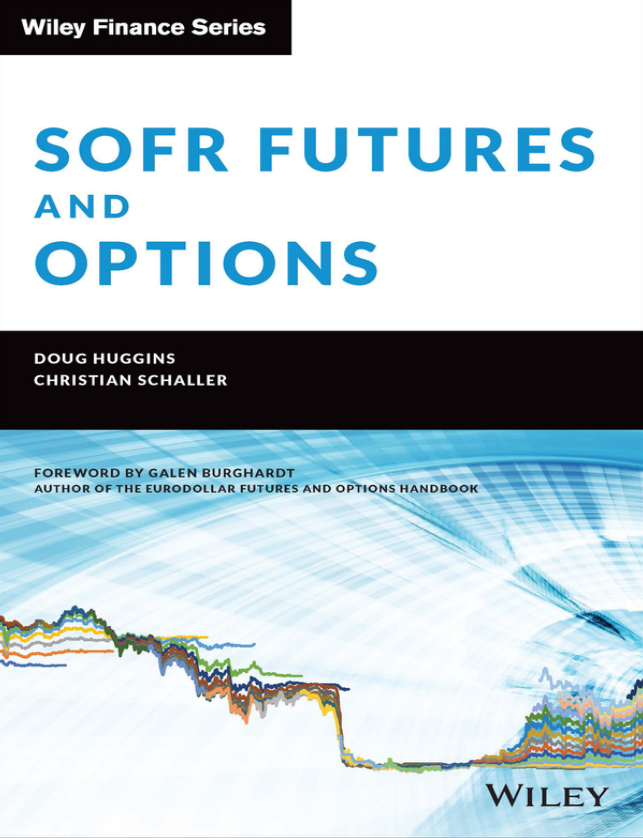Sofr Futures and Options by Doug Huggins

SECTION One
Concepts
CHAPTER 1
SOFR
THE REPO MARKET
The Secured Overnight Financing Rate (SOFR) is based on data collected from the
market for overnight repurchase agreements (i.e., the repo market). A repo
transaction is a loan collateralized by a bond, usually of very high quality, such as a
US Treasury note. Since a repo agreement is a secured loan, the interest rate
associated with a repo transaction is usually lower than interest rates for otherwise
similar unsecured loans, such as LIBOR.
This difference also leads to a lower Bank for International Settlements (BIS) risk
weighting (e.g., 0% for US Treasuries) and thereby to lower capital costs (Huggins
and Schaller 2013, p. 148). Hence, the motivation for the borrower in the repo
market is the lower interest rate that can (usually) be obtained with a secured
financing. The motivation for the lender in the repo market is the significant
reduction of credit risk and a lower cost of capital.
In addition, lenders may be motivated to receive a specific bond as collateral in the
repo transaction in order to cover a short position in this bond. The fact that the
repo market can be used to cover short positions makes it a vital component of many
relative value trades – and therefore the repo rate appears in many relative value
relationships and arbitrage equations. For example, the “classical” relative value
trade of buying a bond futures contract and selling a bond deliverable into that
contract requires covering the short position in the bond until the delivery date of
the futures contract. As a result, the repo rate is a direct determinant of the spread
between the forward price of the bond and the price of the futures contract. Seen
from another perspective, the price of each deliverable bond can be expressed in
terms of its implied repo rate – i.e., the repo rate that would be earned by
purchasing the bond in the spot market, selling the futures contract, and delivering
the bond into the short futures position (Huggins and Schaller 2013, p. 121).
The vital function of the repo market for relative value trading also means that
relative value relationships, at times, can exert a significant influence on the repo
market. For example, if a futures contract were trading cheap to the cheapest-to-
deliver bond, one could buy the futures contract and sell the bond, using the repo
market to cover the short position in the bond. This situation often results in traders
being willing to lend cash at lower rates in exchange for the cheapest-to-deliver
bond as collateral. A borrower of cash in the repo market can then enjoy an
especially low rate, provided he secures the loan with the cheapest-to-deliver bond
rather than a generic US Treasury. Accordingly, a bond is said to be “special
collateral” or “on special” when its repo rate is below the repo rate earned by
general collateral. Apart from bonds that are cheapest-to-deliver in futures
contracts, specialness tends to occur in bonds for which there are significant short
positions, such as new issues and benchmarks (Huggins and Schaller 2013, p. 291).
If the lender of cash in a repo transaction is unable to return the collateral to the
borrower at maturity, this is called a failure, which carries penalties. In order to
avoid the risk of failures, tri-party repo can be used, where a custodial bank hold
the collateral as a third party to the repo transaction. In tri-party repo, no specific
bonds can be selected as collateral, so the tri-party repo rate can be considered as a
general collateral rate, (almost) without the risk of failure. For this reason, on any
given day, the probability distribution for tri-party repo rates tends to be narrower
than the probability distribution for bilateral repo rates. On the left tail of the
distribution, it excludes special repo rates and any premium charged for the
possibility of the counterparty failing.
SOFR: DEFINITIONS AND FEATURES
One can formulate general goals for the task of condensing the overnight repo
market into a single number, which is intended to serve as a reference rate for
collateralized overnight private sector lending and to replace LIBOR:
On one hand, the portion of the repo market considered needs to be large
enough to be representative, not easily manipulable, and provide enough
liquidity even in times of crisis.
On the other hand, the intended use as a reference rate requires sufficient
stability. Given the structure of the repo market, it has at least one inherent
source of instability from special bonds, which needs to be excluded from the
reference rate as much as possible.
Given the experience of LIBOR, which motivates the whole exercise, the new
reference rate should be based on actual market transactions rather than on
surveys of panel members.
The Secured Overnight Financing Rate is the solution suggested by the Alternative
Reference Rates Committee (ARRC) and proposed to the Federal Reserve. Figures
1.1, 1.2, and 1.3 summarize the main characteristics of SOFR, which the New York
Fed publishes on its website, https://www.newyorkfed.org/markets/reference-rates/sofr
, with historical data being available from April 2, 2018.
These definitions and features reflect the status at the time of writing (December
2021). We encourage the reader to monitor the sources mentioned (specifically,
Figure 1.2 source) for changes and updates.




